 Search by Keyword
|
“DIG A PONY”
(John Lennon – Paul McCartney)
As everyone knows, The Beatles' songwriting changed as their career progressed. This is especially evident in John Lennon's output from 1966 onward. The lyrical content found in songs like “And Your Bird Can Sing” and “Tomorrow Never Knows,” not to mention his contributions to the "Sgt. Pepper" album, made many faithful Beatles fans scratch their heads.
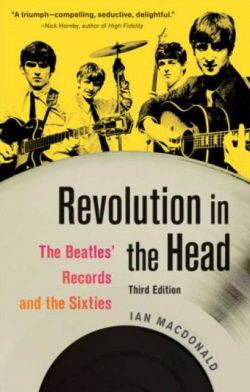 When considering John's later Beatles songs, such as “I Am The Walrus,” “Cry Baby Cry” and “Come Together,” the randomness of the lyrics suggest that the author possibly didn't have any intended interpretation in mind at all. As musicologist Ian MacDonald explains in his book “Revolution In The Head,” certain Lennon songs display “inconsequential fun with a lyric celebrating counter-cultural claims that society's old values and taboos were dead, that life was a game and art a free-for-all, and (especially) that words meant whatever the hell one wished them to.” When considering John's later Beatles songs, such as “I Am The Walrus,” “Cry Baby Cry” and “Come Together,” the randomness of the lyrics suggest that the author possibly didn't have any intended interpretation in mind at all. As musicologist Ian MacDonald explains in his book “Revolution In The Head,” certain Lennon songs display “inconsequential fun with a lyric celebrating counter-cultural claims that society's old values and taboos were dead, that life was a game and art a free-for-all, and (especially) that words meant whatever the hell one wished them to.”
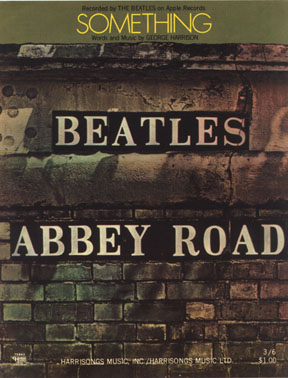 While this is probably true, we should also keep in mind John's process for songwriting, especially concerning lyric writing. “Just say whatever comes into your head each time...until you get the word,” he explained to George when asked for help composing lyrics for his song “Something” in early 1969. Lennon flippantly suggested “attracts me like a cauliflower” for George's song, something he could insert there for the time being so he didn't get stuck, the intention being for this to be replaced at a later time. However, once a composer gets used to hearing a spurious lyric sung repeatedly, the temptation is often to just keep it. While this is probably true, we should also keep in mind John's process for songwriting, especially concerning lyric writing. “Just say whatever comes into your head each time...until you get the word,” he explained to George when asked for help composing lyrics for his song “Something” in early 1969. Lennon flippantly suggested “attracts me like a cauliflower” for George's song, something he could insert there for the time being so he didn't get stuck, the intention being for this to be replaced at a later time. However, once a composer gets used to hearing a spurious lyric sung repeatedly, the temptation is often to just keep it.
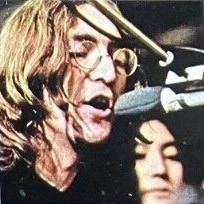 Whatever the case, the finished lyrics for John's composition “Dig A Pony” are left quite ambiguous and open to interpretation, if one feels impelled to interpret it at all. There's quite enough contained in its melody, arrangement and delivery to entertain the listener, despite the song's unusal words. Its author never cared to explain them, so their importance apparently shouldn't be too much of a concern for us. Whatever the case, the finished lyrics for John's composition “Dig A Pony” are left quite ambiguous and open to interpretation, if one feels impelled to interpret it at all. There's quite enough contained in its melody, arrangement and delivery to entertain the listener, despite the song's unusal words. Its author never cared to explain them, so their importance apparently shouldn't be too much of a concern for us.
Songwriting History
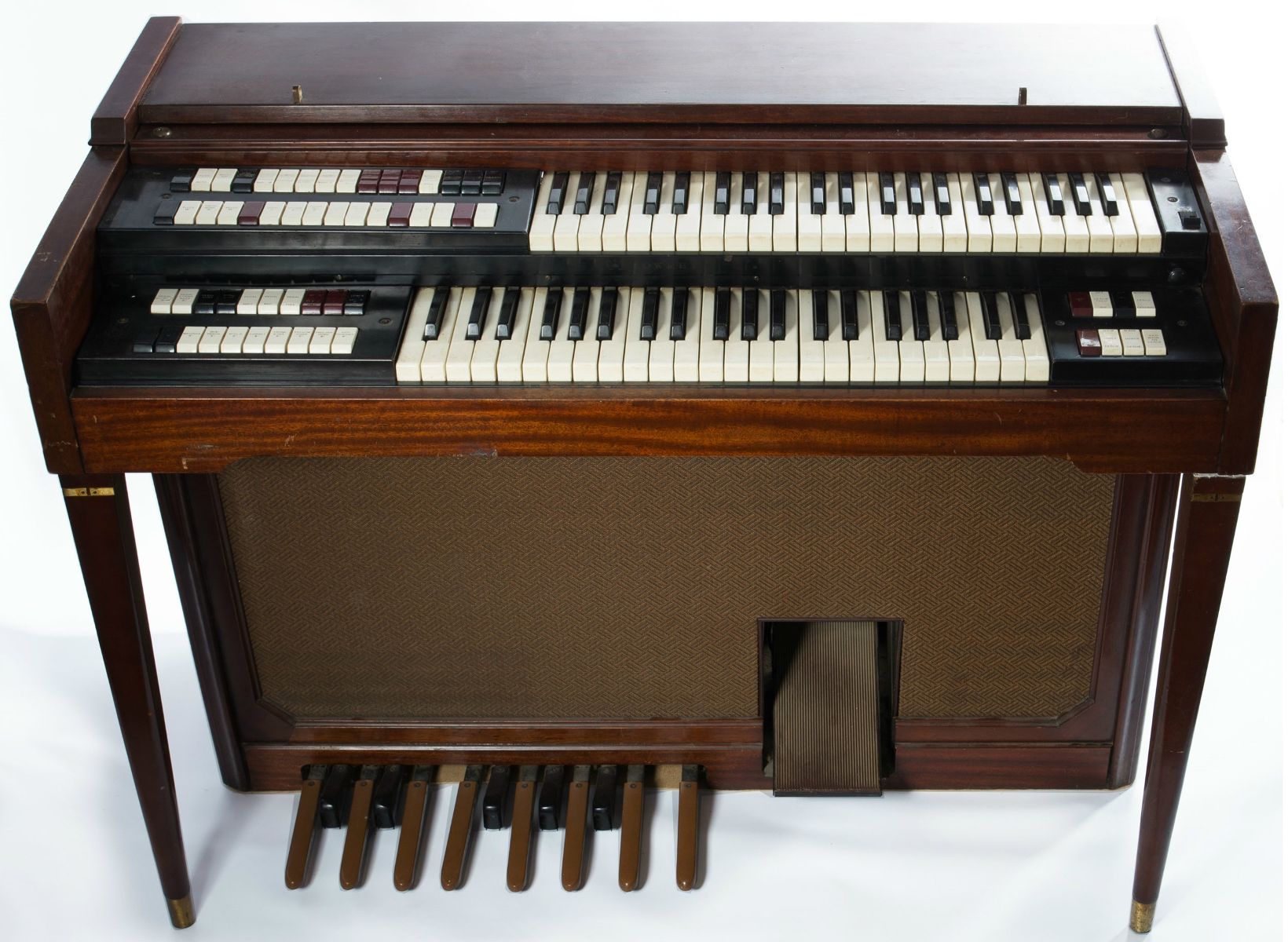 “I just make it up as I go along,” John stated during the January 1969 rehearsals for “Dig A Pony.” As for discarded lyrics, Lennon explained that “'I con a Lowrey' didn't sing well...It's got to be d's and p's, y'know,” “dig a pony” apparently being a better choice. His lyric “I dig a skylight” evolved into “I did a groundhog” before he fell upon “I do a road hog.” “It had to be rougher,” John argued. "I don't care if skylight was prettier." “I just make it up as I go along,” John stated during the January 1969 rehearsals for “Dig A Pony.” As for discarded lyrics, Lennon explained that “'I con a Lowrey' didn't sing well...It's got to be d's and p's, y'know,” “dig a pony” apparently being a better choice. His lyric “I dig a skylight” evolved into “I did a groundhog” before he fell upon “I do a road hog.” “It had to be rougher,” John argued. "I don't care if skylight was prettier."
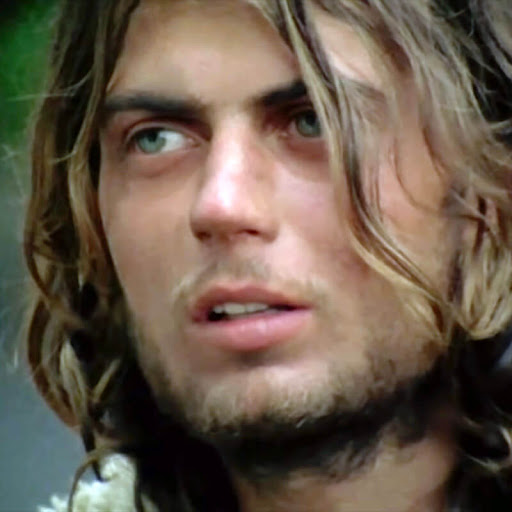 To illustrate the way many avid music listeners tend to attribute specific meaning to song lyrics even when there really isn't any, American Vietnam veteran Curt Claudio had been writing letters to John Lennon in 1971 and announced that he would be coming to the singer's Tittenhurst Park home in Ascot in May to ascertain whether the lyrics to "Dig A Pony," and others, were somehow written about him. After he was discovered sleeping on John's property, he was brought over to meet his idol and question him. Curt Claudio asked, "Remember that one, 'You can radiate everything you are, you can penetrate anywhere you go, syndicate...?' You weren't thinking of anyone in particular when you were singing all of that?" John replied, "How could I have been thinking of you, man? That was just having fun with words. 'Radiate' and 'syndicate' - she (Yoko) wrote that. It was literally a nonsense song. I mean Dylan does that; anybody does it. You just take words and you stick them together. It's like throwing the I Ching or something, you just see what happens. You take a bunch or words and throw 'em out and see if they have any meaning. Some of them do and some of them don't...I'm singing about me and my life, y'know, and if it's relevant for other people's lives, that's all right." To illustrate the way many avid music listeners tend to attribute specific meaning to song lyrics even when there really isn't any, American Vietnam veteran Curt Claudio had been writing letters to John Lennon in 1971 and announced that he would be coming to the singer's Tittenhurst Park home in Ascot in May to ascertain whether the lyrics to "Dig A Pony," and others, were somehow written about him. After he was discovered sleeping on John's property, he was brought over to meet his idol and question him. Curt Claudio asked, "Remember that one, 'You can radiate everything you are, you can penetrate anywhere you go, syndicate...?' You weren't thinking of anyone in particular when you were singing all of that?" John replied, "How could I have been thinking of you, man? That was just having fun with words. 'Radiate' and 'syndicate' - she (Yoko) wrote that. It was literally a nonsense song. I mean Dylan does that; anybody does it. You just take words and you stick them together. It's like throwing the I Ching or something, you just see what happens. You take a bunch or words and throw 'em out and see if they have any meaning. Some of them do and some of them don't...I'm singing about me and my life, y'know, and if it's relevant for other people's lives, that's all right."
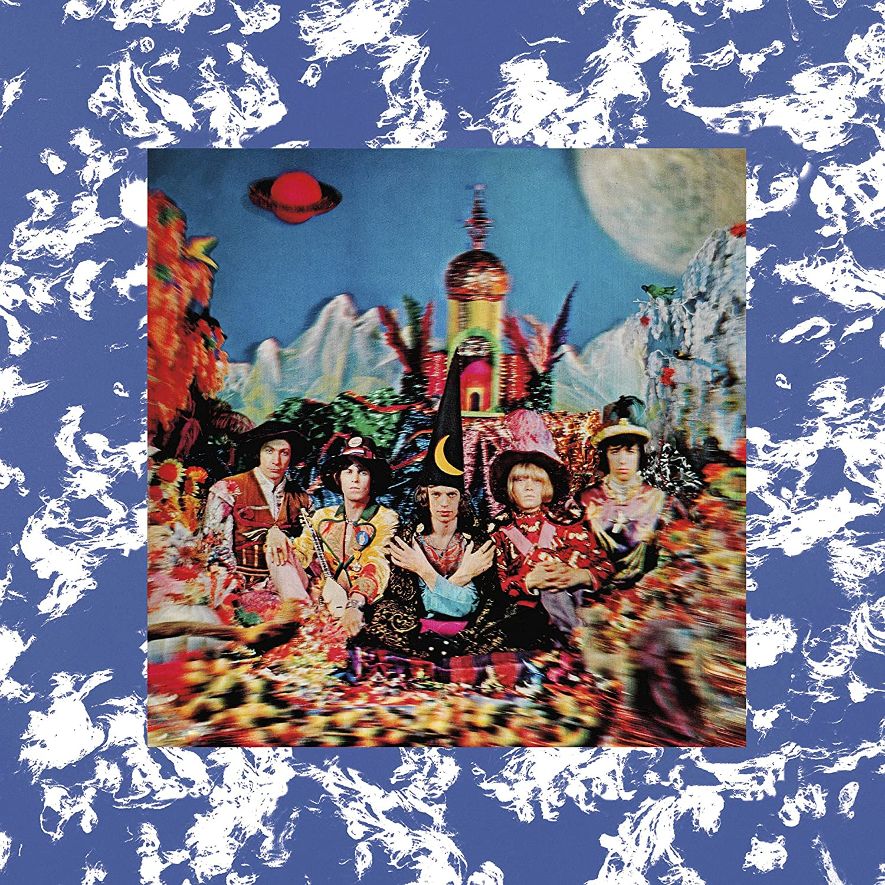 Although the lyrics in the verses of “Dig A Pony” were self-proclaimed as “fun with words” and “nonsense,” it appears that certain phrases did have meaning to John, as disjointed as they may have been. “You can penetrate any place you go” brings to mind the state of John's love life at this point. “It was at the beginning of my relationship with Yoko and I was very sexually oriented then. When we weren't in the studio, we were in bed.” “I roll a stoney / Well, you can imitate everyone you know” has been explained as his annoyance that The Rolling Stones were prone to steal ideas from The Beatles. “I would like to just list what we did and what The Stones did two months after on every f*ckin' album,” he related to Rolling Stone magazine in 1970. “Every f*ckin' thing we did, Mick does exactly the same. They are not in the same class, music-wise or power-wise. Never were!” Although the lyrics in the verses of “Dig A Pony” were self-proclaimed as “fun with words” and “nonsense,” it appears that certain phrases did have meaning to John, as disjointed as they may have been. “You can penetrate any place you go” brings to mind the state of John's love life at this point. “It was at the beginning of my relationship with Yoko and I was very sexually oriented then. When we weren't in the studio, we were in bed.” “I roll a stoney / Well, you can imitate everyone you know” has been explained as his annoyance that The Rolling Stones were prone to steal ideas from The Beatles. “I would like to just list what we did and what The Stones did two months after on every f*ckin' album,” he related to Rolling Stone magazine in 1970. “Every f*ckin' thing we did, Mick does exactly the same. They are not in the same class, music-wise or power-wise. Never were!”
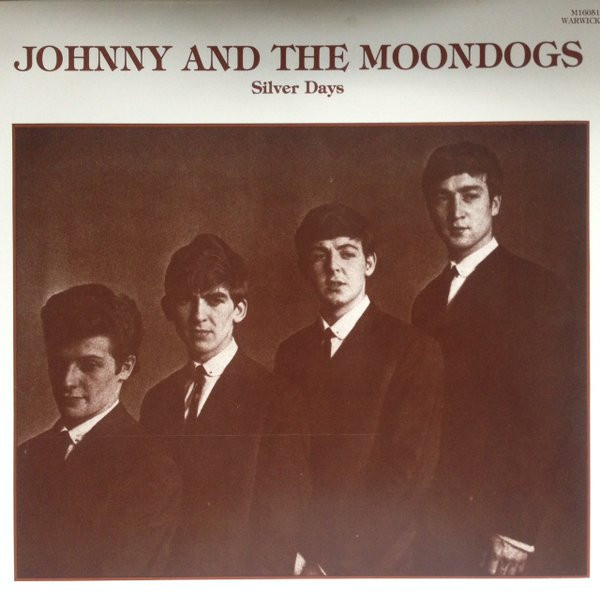 An obvious interpretation of the lyric “I pick a moon dog” is of this being a reference to an early group name under consideration for The Beatles, “Johnny And The Moondogs.” Otherwise, the pattern of rhyming “celebrate,” “penetrate,” “radiate,” “imitate,” “indicate” and “syndicate” can be easily chalked up to poetic license and nothing more. It should also be mentioned here, while not substantiated, that a "pony" is a small horse, this being a slang term for "heroin," both John and Yoko being addicted to this drug at the time. An obvious interpretation of the lyric “I pick a moon dog” is of this being a reference to an early group name under consideration for The Beatles, “Johnny And The Moondogs.” Otherwise, the pattern of rhyming “celebrate,” “penetrate,” “radiate,” “imitate,” “indicate” and “syndicate” can be easily chalked up to poetic license and nothing more. It should also be mentioned here, while not substantiated, that a "pony" is a small horse, this being a slang term for "heroin," both John and Yoko being addicted to this drug at the time.
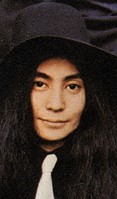 One fact that can be established is that the chorus, beginning with the lyric “All I want is you,” which itself was used as the working title for the song for some time during its writing, rehearsing and recording, was taken from a separate unfinished song that John had written about Yoko. As we have witnessed with both Lennon and McCartney in their later Beatles career, combining seperate songwriting attempts into one composition had become the norm. One fact that can be established is that the chorus, beginning with the lyric “All I want is you,” which itself was used as the working title for the song for some time during its writing, rehearsing and recording, was taken from a separate unfinished song that John had written about Yoko. As we have witnessed with both Lennon and McCartney in their later Beatles career, combining seperate songwriting attempts into one composition had become the norm.
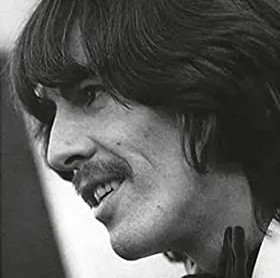 Melody-wise, John opted for a 6/8 waltz-like time signature with a few uncharacteristic chord changes, which made for an inventive guitar solo from George when it came time for writing one. Also of interest is what Ian MacDonald describes as a “comically lumbering unison 3/4 riff” that begins and ends the song, one that took much rehearsal time to master, the result being both impressive and unprecedented for a group such as The Beatles. Melody-wise, John opted for a 6/8 waltz-like time signature with a few uncharacteristic chord changes, which made for an inventive guitar solo from George when it came time for writing one. Also of interest is what Ian MacDonald describes as a “comically lumbering unison 3/4 riff” that begins and ends the song, one that took much rehearsal time to master, the result being both impressive and unprecedented for a group such as The Beatles.
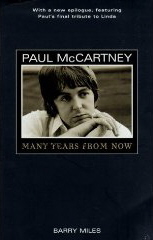 Since John debuted “Dig A Pony” on the first day of rehearsals for what became the “Get Back / Let It Be” project on January 2nd, 1969, and a good amount of the lyrics were already in place on this day, it can be estimated that its composition began sometime in December of 1968 and was fully complete by the time of its final performance on the roof of their Apple building on January 30th, 1969. “Paul had no input on 'Dig A Pony,' which was entirely John's,” Barry Miles writes in Paul's book “Many Years From Now,” adding: “Musically the song was quite complex and the group enjoyed the challenges presented in recording it.” Since John debuted “Dig A Pony” on the first day of rehearsals for what became the “Get Back / Let It Be” project on January 2nd, 1969, and a good amount of the lyrics were already in place on this day, it can be estimated that its composition began sometime in December of 1968 and was fully complete by the time of its final performance on the roof of their Apple building on January 30th, 1969. “Paul had no input on 'Dig A Pony,' which was entirely John's,” Barry Miles writes in Paul's book “Many Years From Now,” adding: “Musically the song was quite complex and the group enjoyed the challenges presented in recording it.”
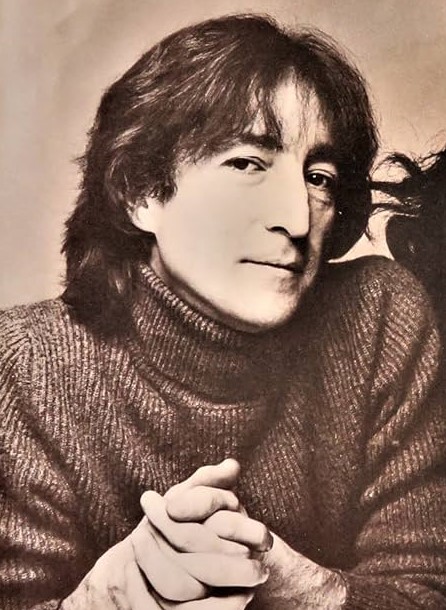 It is unfortunate, however, that's John's opinion of this complex piece of art, as displayed publicly on the Apple rooftop, soured in his later years. Referring to “Dig A Pony” as “another piece of garbage” in September of 1980, he undoubtedly was referring to its meaningless lyrics and not the intricacies of the arrangement or the performance the group put forward. It is unfortunate, however, that's John's opinion of this complex piece of art, as displayed publicly on the Apple rooftop, soured in his later years. Referring to “Dig A Pony” as “another piece of garbage” in September of 1980, he undoubtedly was referring to its meaningless lyrics and not the intricacies of the arrangement or the performance the group put forward.
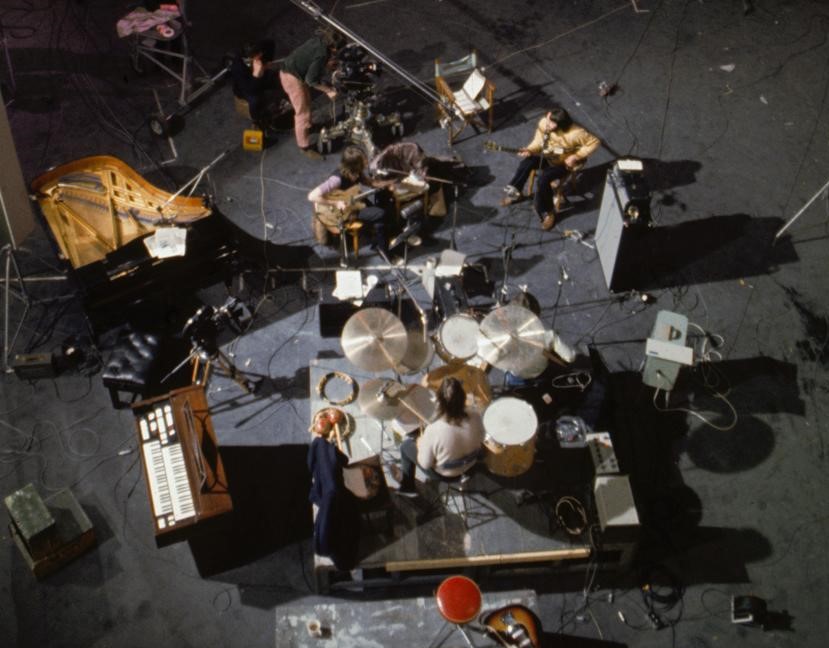
The Beatles at Twickenham Film Studios, circa January, 1969.
Recording History
The first day of rehearsals at Twickenham Film Studios for what became the “Let It Be” movie was January 2nd, 1969. John and George were the first Beatles to get there at around 11 am. Before the others arrived, John introduced his new song “Don't Let Me Down” to George, which progressed into 15 renditions of the song being rehearsed by the two guitarists before Harrison introduced his song “All Things Must Pass” to John in return.
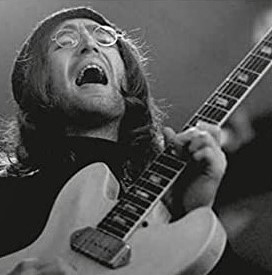 After two runthroughs of this song, John then performed a solo rendition of “Dig A Pony,” which was titled “All I Want Is You” at this point, on electric guitar. It was during this debut of the song, which practically made it through to the end with much of the lyrics already in place, that Ringo arrived. At one point during this rehearsal, George wanted clarification of John's odd lyric, asking, “dig a pony?”, to which John answered, “yeah, dig A pony.” Interestingly, John's lyric included the line “I kill a hound dog” at the beginning of one of the verses, this lyric being held over to later rehearsals as well. George did join in a little with some lead guitar contributions that prompted John to reply, “that's right.” The song was dropped thereafter, Paul's arrival prompting them to work extensively on “I've Got A Feeling” and “Two Of Us” instead. After two runthroughs of this song, John then performed a solo rendition of “Dig A Pony,” which was titled “All I Want Is You” at this point, on electric guitar. It was during this debut of the song, which practically made it through to the end with much of the lyrics already in place, that Ringo arrived. At one point during this rehearsal, George wanted clarification of John's odd lyric, asking, “dig a pony?”, to which John answered, “yeah, dig A pony.” Interestingly, John's lyric included the line “I kill a hound dog” at the beginning of one of the verses, this lyric being held over to later rehearsals as well. George did join in a little with some lead guitar contributions that prompted John to reply, “that's right.” The song was dropped thereafter, Paul's arrival prompting them to work extensively on “I've Got A Feeling” and “Two Of Us” instead.
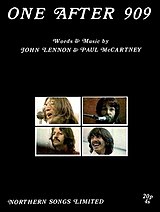 John didn't bring “Dig A Pony” out for consideration again at Twickenham Studios until January 7th, 1969. This was a lackluster rehearsal of the song with all four Beatles participating to a degree, although this was the first time Paul heard it. McCartney attempted singing some high harmonies to John's vocal and started playing a bit of bass, but his half-hearted contributions were viewed by Lennon as disinterest. As John related about this day just after the "Let It Be" movie came out, "Paul yawned and plays boogie, and I immediately say, 'Oh, does anybody want to do a fast one?' That's how I am. So year after year that begins to wear you down." They immediately delved into more work on the old unreleased Beatles song “One After 909,” which they had recently resurrected in consideration for the project. A small segment of this day's “Dig A Pony” rehearsal was eventually included in the “Let It Be” film. John didn't bring “Dig A Pony” out for consideration again at Twickenham Studios until January 7th, 1969. This was a lackluster rehearsal of the song with all four Beatles participating to a degree, although this was the first time Paul heard it. McCartney attempted singing some high harmonies to John's vocal and started playing a bit of bass, but his half-hearted contributions were viewed by Lennon as disinterest. As John related about this day just after the "Let It Be" movie came out, "Paul yawned and plays boogie, and I immediately say, 'Oh, does anybody want to do a fast one?' That's how I am. So year after year that begins to wear you down." They immediately delved into more work on the old unreleased Beatles song “One After 909,” which they had recently resurrected in consideration for the project. A small segment of this day's “Dig A Pony” rehearsal was eventually included in the “Let It Be” film.
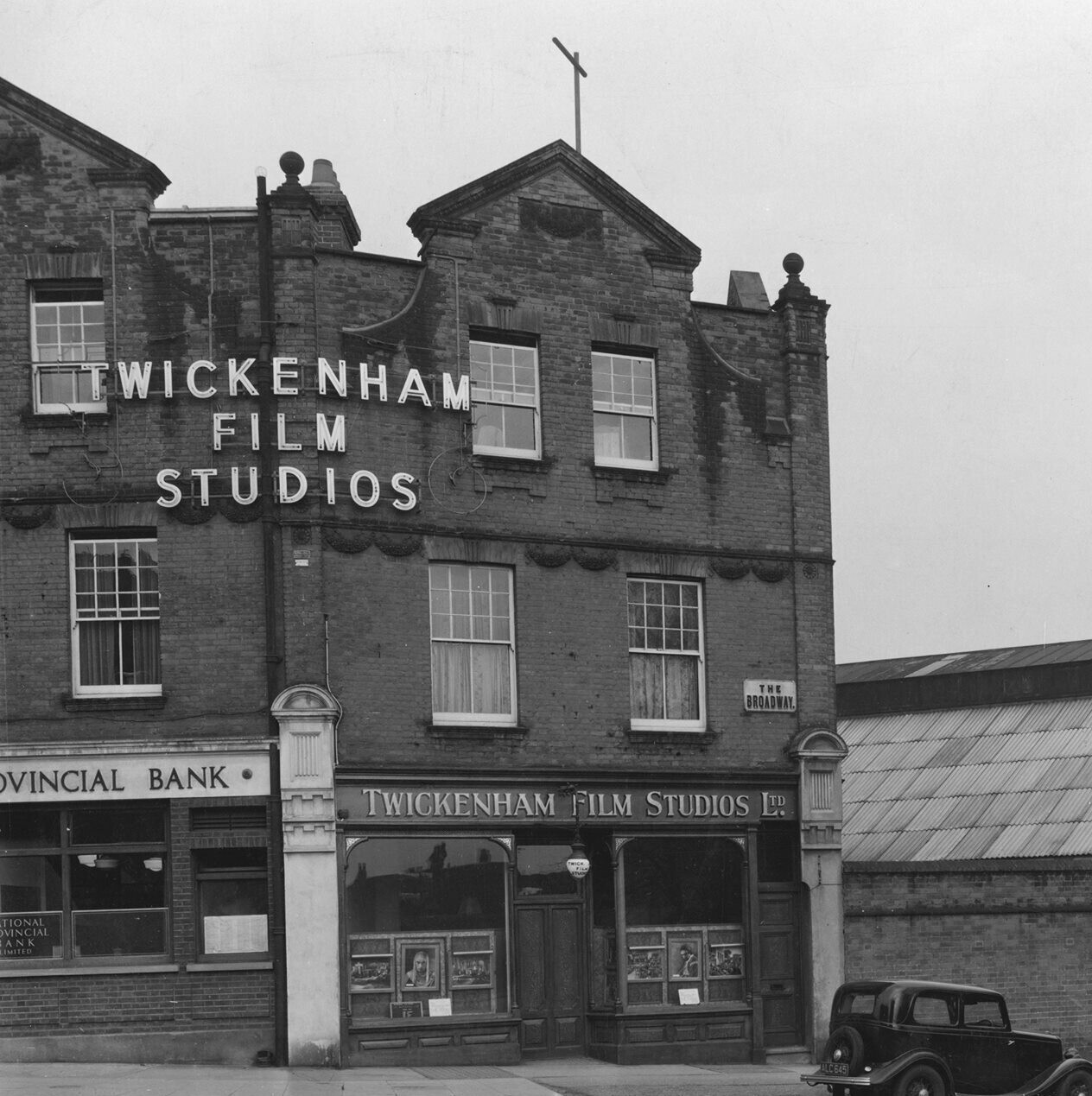 During the absence of George Harrison, who announced that he had quit The Beatles on January 10th, 1969, John played bits of “Dig A Pony” during their final rehearsal at Twickenham Studios on January 13th, 1969, John, Paul and Ringo being the only Beatles present. This was not any serious attempt at rehearsing the song, most of this day's activities consisting of discussions about how to proceed with the project at hand and with The Beatles as a group. During the absence of George Harrison, who announced that he had quit The Beatles on January 10th, 1969, John played bits of “Dig A Pony” during their final rehearsal at Twickenham Studios on January 13th, 1969, John, Paul and Ringo being the only Beatles present. This was not any serious attempt at rehearsing the song, most of this day's activities consisting of discussions about how to proceed with the project at hand and with The Beatles as a group.
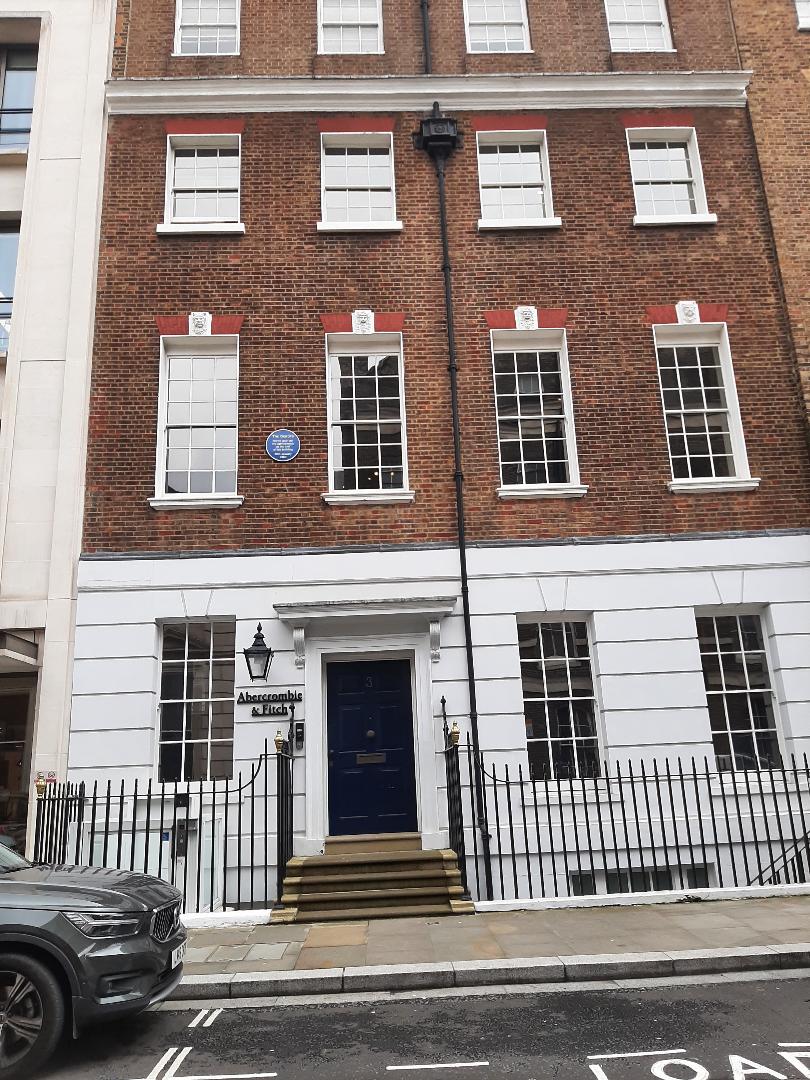 After George was coaxed back into The Beatles, they resumed work on the “Get Back” project in their basement studios at Apple headquarters at 3 Savile Row in London on January 21st, 1969. “Dig A Pony” got the most attention on this day, the band spending much time working out the full arrangement of the song as we know it, right down to George perfecting his guitar solo and John finishing off all of the lyrics. After he decided to replace the word "skylight" with "roadhog," and leading them through a very rough version of "Roll Over Beethoven," one of the song's rehearsals began with Lennon humorously introducing, “'I Dig A Pygmy' by Charles Hawtrey And The Deaf-Aids...Phase one in which Doris gets her oats,” this statement making it onto the released “Let It Be” album as an introduction to the track “Two Of Us.” After George was coaxed back into The Beatles, they resumed work on the “Get Back” project in their basement studios at Apple headquarters at 3 Savile Row in London on January 21st, 1969. “Dig A Pony” got the most attention on this day, the band spending much time working out the full arrangement of the song as we know it, right down to George perfecting his guitar solo and John finishing off all of the lyrics. After he decided to replace the word "skylight" with "roadhog," and leading them through a very rough version of "Roll Over Beethoven," one of the song's rehearsals began with Lennon humorously introducing, “'I Dig A Pygmy' by Charles Hawtrey And The Deaf-Aids...Phase one in which Doris gets her oats,” this statement making it onto the released “Let It Be” album as an introduction to the track “Two Of Us.”
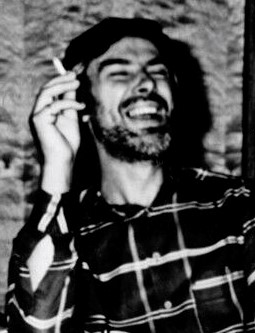 One noteworthy part of the arrangement that was worked out on this day is the vocal “all I want is...” section that appears toward the beginning and then at the conclusion of the song, both of these segments eventually being edited off of the released version of the recording. Once producer / engineer Glyn Johns was ready to make an official recording in the newly installed control room, two EMI four-track consoles being sequenced together and fed to George Harrison's eight-track recording unit, two attempts at getting a releasable version of “Dig A Pony” were put to tape. They listened back to the first take, which prompted them to continue rehearsing the song, John instructing Ringo how to stagnate his playing in the verses of the song. They only managed a few false starts before they went on to other things. One noteworthy part of the arrangement that was worked out on this day is the vocal “all I want is...” section that appears toward the beginning and then at the conclusion of the song, both of these segments eventually being edited off of the released version of the recording. Once producer / engineer Glyn Johns was ready to make an official recording in the newly installed control room, two EMI four-track consoles being sequenced together and fed to George Harrison's eight-track recording unit, two attempts at getting a releasable version of “Dig A Pony” were put to tape. They listened back to the first take, which prompted them to continue rehearsing the song, John instructing Ringo how to stagnate his playing in the verses of the song. They only managed a few false starts before they went on to other things.
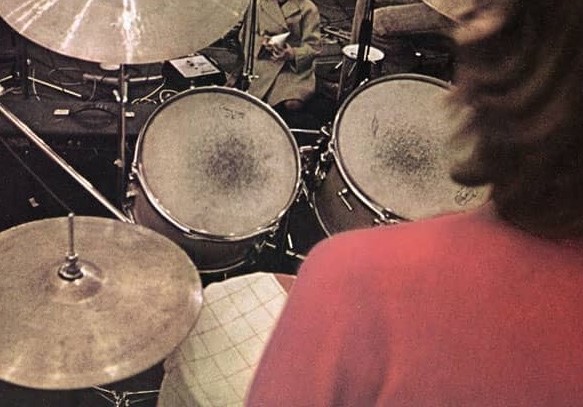 On the following day, January 22nd, 1969, The Beatles again worked extensively on “Dig A Pony,” running through 24 versions of the song, some of which were recorded by Glyn Johns. The group was in good spirits on this day with much goofing around being heard on the tapes, John singing a verse on one of these takes in a humorous staccato fashion. John also took some time on this day instructing Ringo on his drum work for the song, focusing on where his cymbals should be emphasized. After listening to a playback of one of the day's recordings in the control room, John demonstrates to Ringo what he wants the drums to do and tells him to "alternate everything now," George adding, "really, fill it out a bit." On the following day, January 22nd, 1969, The Beatles again worked extensively on “Dig A Pony,” running through 24 versions of the song, some of which were recorded by Glyn Johns. The group was in good spirits on this day with much goofing around being heard on the tapes, John singing a verse on one of these takes in a humorous staccato fashion. John also took some time on this day instructing Ringo on his drum work for the song, focusing on where his cymbals should be emphasized. After listening to a playback of one of the day's recordings in the control room, John demonstrates to Ringo what he wants the drums to do and tells him to "alternate everything now," George adding, "really, fill it out a bit."
One of the recorded takes of “Dig A Pony” on this day appears on the 1996 compilation album “Anthology 3,” which ends with the following dialog:
John: “Shalavat.”
Paul: “Shalom” (which is Hebrew for “peace”). “Ah, you see, you see? We improve with time, like a fine wine, really. I'll put us down as Beaujolais '62!”
John: “You're not talking to 'Ricky And The Red Streaks,' y'know!” (this being a pseudonym suggested by Paul for when they were to proposing to tour once again).
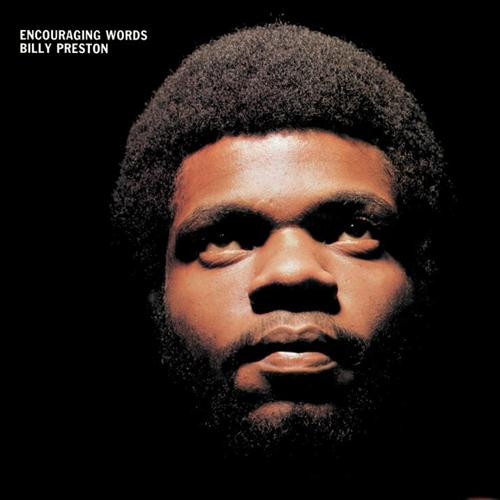 Another of the takes recorded on this day, January 22nd, was chosen by Glyn Johns for a proposed “Get Back” album intended for mid 1969 release, bootleg recordings of this leaking out illegally later that year. With Billy Preston present on this day, his keyboard contribution can be heard on this take, which adds some musical depth to the recording. A decision was also made to lop off some awkward introductory measures in the opening and closing segments of the song, this allowing the song to flow noticably better. Another of the takes recorded on this day, January 22nd, was chosen by Glyn Johns for a proposed “Get Back” album intended for mid 1969 release, bootleg recordings of this leaking out illegally later that year. With Billy Preston present on this day, his keyboard contribution can be heard on this take, which adds some musical depth to the recording. A decision was also made to lop off some awkward introductory measures in the opening and closing segments of the song, this allowing the song to flow noticably better.
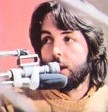 This version begins with John instructing Ringo as follows: “Ok, so you, you're doing the, you never change drumming now...yeah, that's ok.” While Paul and George practice their simultaneous “all I want is you” singing and playing, John then instructs the producer, “Ok, alright Glynnis, we're off again, yeah...ok, one, two, three...” This count-off reveals that Ringo wasn't ready, so John counts it down again to begin the take. John's lead vocals in the fifth verse are sung off-key, which prompts Paul to laugh, Lennon also realizing that this wouldn't become the perfect take. John himself chuckles during the sixth verse as he decides to see this take through to the end regardless of it not making the grade. After it concludes, John answers the phrase “all I want is you” with “YES I DO” in an exagerated voice. One can easily see why this take of the song was eventually rejected for official release in favor of a more polished performance. This version begins with John instructing Ringo as follows: “Ok, so you, you're doing the, you never change drumming now...yeah, that's ok.” While Paul and George practice their simultaneous “all I want is you” singing and playing, John then instructs the producer, “Ok, alright Glynnis, we're off again, yeah...ok, one, two, three...” This count-off reveals that Ringo wasn't ready, so John counts it down again to begin the take. John's lead vocals in the fifth verse are sung off-key, which prompts Paul to laugh, Lennon also realizing that this wouldn't become the perfect take. John himself chuckles during the sixth verse as he decides to see this take through to the end regardless of it not making the grade. After it concludes, John answers the phrase “all I want is you” with “YES I DO” in an exagerated voice. One can easily see why this take of the song was eventually rejected for official release in favor of a more polished performance.
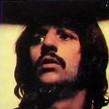 The following day, January 23rd, 1969, was primarily used to perfect the song “Get Back” at Apple Studios, but they did touch on “Dig A Pony” once. They ran through it once again in Apple Studios on January 26th, 1969, The Beatles feeling pleased enough with the work they had done on it so far that they basically put it aside to work on other material that needed attention. The following day, January 23rd, 1969, was primarily used to perfect the song “Get Back” at Apple Studios, but they did touch on “Dig A Pony” once. They ran through it once again in Apple Studios on January 26th, 1969, The Beatles feeling pleased enough with the work they had done on it so far that they basically put it aside to work on other material that needed attention.
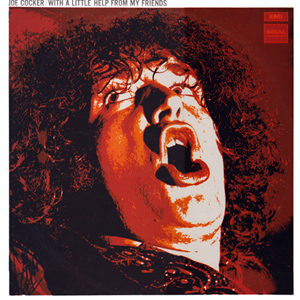 Of the twelve runthroughs of “Dig A Pony” that were performed by The Beatles at Apple Studios on January 28th, 1969 before lunch, eight of them were recorded by George Martin, only two of these making it all the way through to the end of the song. During the rehearsals on this day, Paul notices some similarity in the melody line to a recent UK #1 hit by Joe Cocker, namely his cover of "With A Little Help From My Friends." McCartney states, "Actually, that's very like Joe Cocker...'All I want is you'...but it's great!" Paul also mentions his admiration for the song's chord changes by adding, "Great changes in this one!" The final version of the day, "take 14," which is included on various Anniversary editions of the "Let It Be" album, begins with John signaling Glyn Johns to acknowledge another runthrough of the song. "Glynnis!" he states, which is interrupted by someone asking "What's this mic for," to which John answers, "to pick up your candid recording conversation." After the semi-flawed take is complete, John sings in falsetto, “I think the other one was much better, let's do 'Get Back.'” Of the twelve runthroughs of “Dig A Pony” that were performed by The Beatles at Apple Studios on January 28th, 1969 before lunch, eight of them were recorded by George Martin, only two of these making it all the way through to the end of the song. During the rehearsals on this day, Paul notices some similarity in the melody line to a recent UK #1 hit by Joe Cocker, namely his cover of "With A Little Help From My Friends." McCartney states, "Actually, that's very like Joe Cocker...'All I want is you'...but it's great!" Paul also mentions his admiration for the song's chord changes by adding, "Great changes in this one!" The final version of the day, "take 14," which is included on various Anniversary editions of the "Let It Be" album, begins with John signaling Glyn Johns to acknowledge another runthrough of the song. "Glynnis!" he states, which is interrupted by someone asking "What's this mic for," to which John answers, "to pick up your candid recording conversation." After the semi-flawed take is complete, John sings in falsetto, “I think the other one was much better, let's do 'Get Back.'”
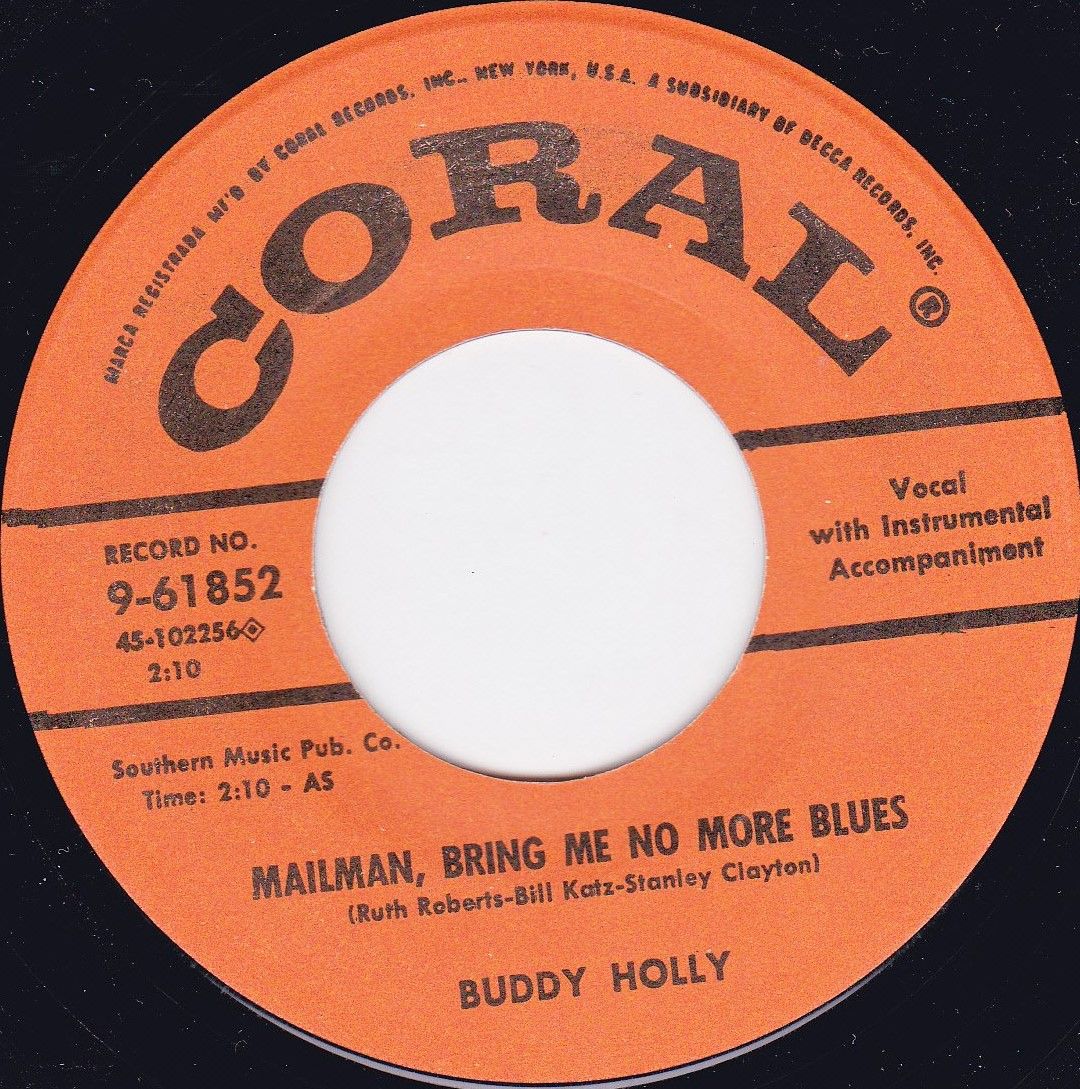 It was decided the next day, January 29th, 1969, that they would perform their proposed concert the following day on the roof of their Apple headquarters building. This being the case, they thought it wise to run through each of the five songs they planned to do on the roof at least once, the refined “Dig A Pony” being among them. George Martin was on hand also on this day to put the rehearsals down on tape in case it was decided to use any of these renditions for record release, an impromptu version of Buddy Holly's “Mailman, Bring Me No More Blues” being the only performance eventually released on the 1996 compilation album “Anthology 3.” The rehearsal of “Dig A Pony” on this day, which was introduced by John as “I Frig A Pony,” was sung by its composer with a somewhat subdued voice in order not to strain his vocal chords. Paul joined in on harmony during the verses at times, even singing along with George's guitar solo. The song was now ready for its famous live performance the next day. It was decided the next day, January 29th, 1969, that they would perform their proposed concert the following day on the roof of their Apple headquarters building. This being the case, they thought it wise to run through each of the five songs they planned to do on the roof at least once, the refined “Dig A Pony” being among them. George Martin was on hand also on this day to put the rehearsals down on tape in case it was decided to use any of these renditions for record release, an impromptu version of Buddy Holly's “Mailman, Bring Me No More Blues” being the only performance eventually released on the 1996 compilation album “Anthology 3.” The rehearsal of “Dig A Pony” on this day, which was introduced by John as “I Frig A Pony,” was sung by its composer with a somewhat subdued voice in order not to strain his vocal chords. Paul joined in on harmony during the verses at times, even singing along with George's guitar solo. The song was now ready for its famous live performance the next day.
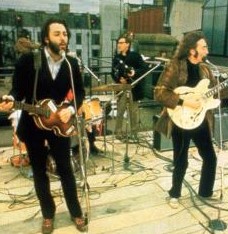 Around midday on January 30th, 1969, strategically timed to coincide with passers-by being on their lunch hour, The Beatles began their 42 minute rooftop concert atop Apple headquarters in Savile Row, London. While their most noteworthy new songs, “Get Back” and “Don't Let Me Down,” were played more than once, “Dig A Pony” was only played one time. They did quietly rehearse certain segments of the song beforehand while the engineers and crew were getting ready for recording and filming, this rehearsal inadvertently being preserved on the eight-track tape. George reviewed his guitar solo at this time, for instance, while John is heard requesting for someone to hold the lyrics out in front of him on a clipboard. A few seconds of guitars fumbling and tuning at this time actually found their way onto the released "Let It Be" album, this being heard just prior to and during the beginning moments of "Get Back." When they received the go-ahead, George counts off the song only to be stopped by Ringo calling out "hold it," the drummer than proceeding quickly put down his cigarette. After Lennon sniffs his runny nose because of the cold weather and Paul mimics Ringo's "hold it" shout, George counts-off the song a second time, which begins the recording of the song as we know it. At its conclusion, John states, "Thank you, brothers...My hands are getting too cold to play the chords now." Around midday on January 30th, 1969, strategically timed to coincide with passers-by being on their lunch hour, The Beatles began their 42 minute rooftop concert atop Apple headquarters in Savile Row, London. While their most noteworthy new songs, “Get Back” and “Don't Let Me Down,” were played more than once, “Dig A Pony” was only played one time. They did quietly rehearse certain segments of the song beforehand while the engineers and crew were getting ready for recording and filming, this rehearsal inadvertently being preserved on the eight-track tape. George reviewed his guitar solo at this time, for instance, while John is heard requesting for someone to hold the lyrics out in front of him on a clipboard. A few seconds of guitars fumbling and tuning at this time actually found their way onto the released "Let It Be" album, this being heard just prior to and during the beginning moments of "Get Back." When they received the go-ahead, George counts off the song only to be stopped by Ringo calling out "hold it," the drummer than proceeding quickly put down his cigarette. After Lennon sniffs his runny nose because of the cold weather and Paul mimics Ringo's "hold it" shout, George counts-off the song a second time, which begins the recording of the song as we know it. At its conclusion, John states, "Thank you, brothers...My hands are getting too cold to play the chords now."
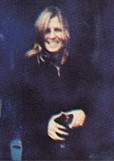 Upon leaving the roof, The Beatles filed into the basement control room to listen to the recordings made moments before while 'joss-sticks' were burning for atmosphere. As witnessed in Peter Jackson's "Get Back" documentary series, they all heard a playback of "Dig A Pony," Linda Eastman, Yoko and Maureen Starkey enjoying the performance as well. Upon leaving the roof, The Beatles filed into the basement control room to listen to the recordings made moments before while 'joss-sticks' were burning for atmosphere. As witnessed in Peter Jackson's "Get Back" documentary series, they all heard a playback of "Dig A Pony," Linda Eastman, Yoko and Maureen Starkey enjoying the performance as well.
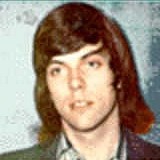 On February 5th, 1969, engineers Glyn Johns and Alan Parsons, and possibly George Martin, met at Apple Studios to create stereo mixes of the five songs played on the rooftop in preperation for future release. One mix of “Dig A Pony” was all that was needed, although this mix never saw the light of day. On February 5th, 1969, engineers Glyn Johns and Alan Parsons, and possibly George Martin, met at Apple Studios to create stereo mixes of the five songs played on the rooftop in preperation for future release. One mix of “Dig A Pony” was all that was needed, although this mix never saw the light of day.
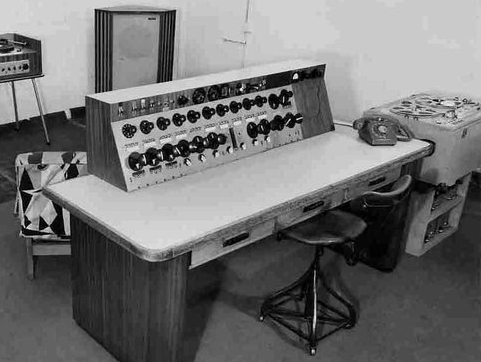 Given the opportunity by John and Paul to assemble the next Beatles album from the January sessions, Glyn Johns began digging through the big pile of eight-track tapes from these sessions at Olympic Sound Studios on March 10th, 1969. Glyn Johns decided that the January 22nd recording of “Dig A Pony” described above was suitable for release so he, and possibly George Martin, created a stereo mix of this version on this day. The release of the album was, however, put on hold and shelved for the time being. The same mix of “Dig A Pony” was also proposed for inclusion on a January 1970 edition of the album, this once again being put on hold. Given the opportunity by John and Paul to assemble the next Beatles album from the January sessions, Glyn Johns began digging through the big pile of eight-track tapes from these sessions at Olympic Sound Studios on March 10th, 1969. Glyn Johns decided that the January 22nd recording of “Dig A Pony” described above was suitable for release so he, and possibly George Martin, created a stereo mix of this version on this day. The release of the album was, however, put on hold and shelved for the time being. The same mix of “Dig A Pony” was also proposed for inclusion on a January 1970 edition of the album, this once again being put on hold.
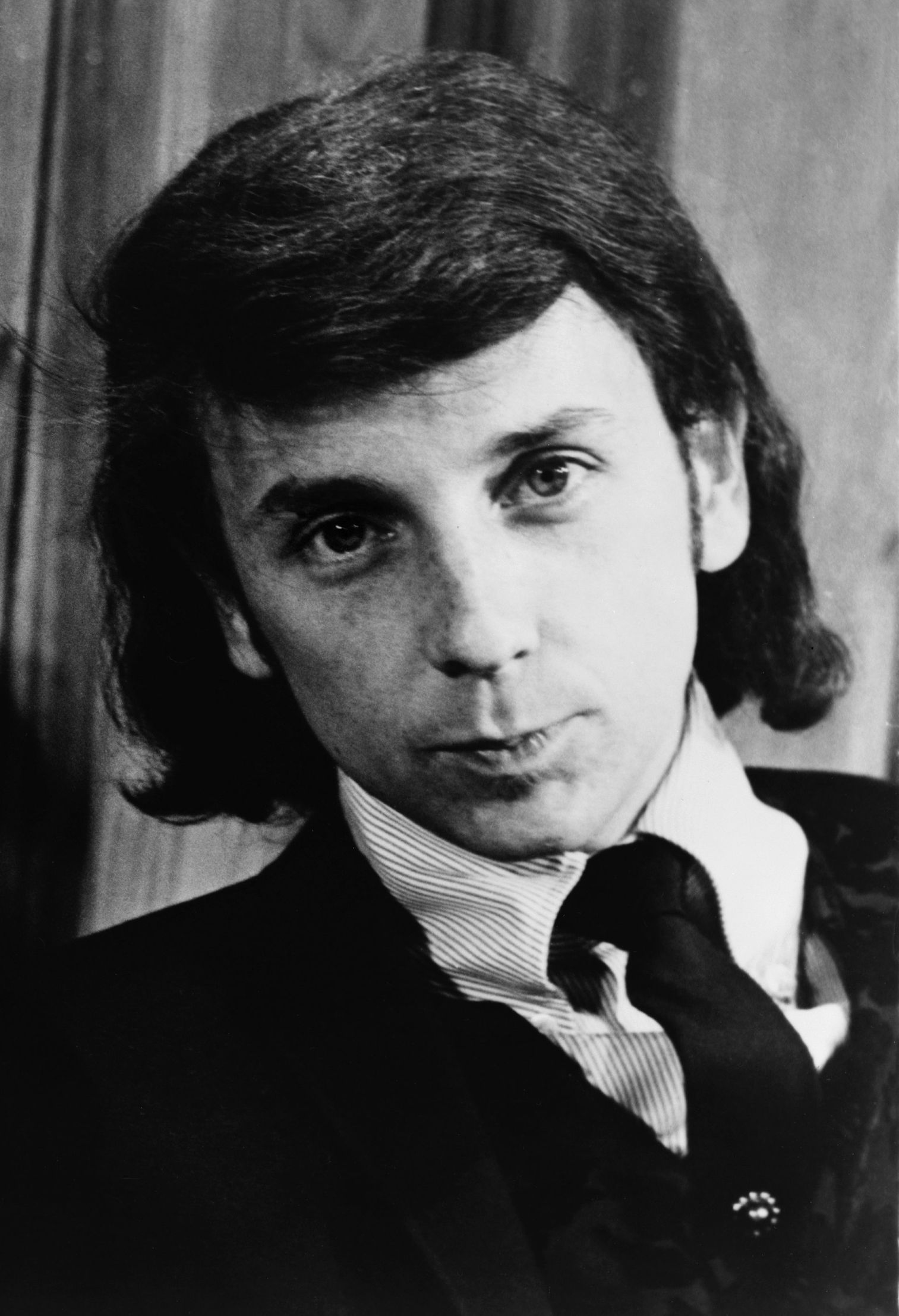 On March 23rd, 1970, however, Phil Spector was called in to prepare a soundtrack album for the soon-to-be-released “Let It Be” film. Spector met with engineers Peter Bown and Roger Ferris in Room 4 of Abbey Road studios to begin creating stereo mixes for this album, wisely choosing the excellent rooftop performance of “Dig A Pony” for inclusion therein. For some reason, Spector decided to fade down Billy Preston's electric piano in the mix, and because of the somewhat awkward feel of the twice repeated “all I want is” introductory and concluding segments of the song, Spector wisely decided to edit them out entirely. He did, however, include some of the commotion and chatter before and after the performance, including Ringo's "hold it" shout and John's concluding statement about his hands being cold. On March 23rd, 1970, however, Phil Spector was called in to prepare a soundtrack album for the soon-to-be-released “Let It Be” film. Spector met with engineers Peter Bown and Roger Ferris in Room 4 of Abbey Road studios to begin creating stereo mixes for this album, wisely choosing the excellent rooftop performance of “Dig A Pony” for inclusion therein. For some reason, Spector decided to fade down Billy Preston's electric piano in the mix, and because of the somewhat awkward feel of the twice repeated “all I want is” introductory and concluding segments of the song, Spector wisely decided to edit them out entirely. He did, however, include some of the commotion and chatter before and after the performance, including Ringo's "hold it" shout and John's concluding statement about his hands being cold.
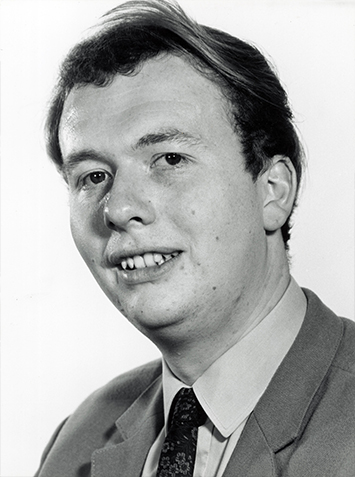 Sometime in 1996, George Martin and engineer Geoff Emerick returned to the master tapes of “Dig A Pony” recorded at Apple Studios on January 22nd, 1969, to chose a rendition for inclusion on the compilation album “Anthology 3.” As described above, this vibrant stereo mix, including Beatles chatter, shows how well the group had worked out the arrangement thus far. Sometime in 1996, George Martin and engineer Geoff Emerick returned to the master tapes of “Dig A Pony” recorded at Apple Studios on January 22nd, 1969, to chose a rendition for inclusion on the compilation album “Anthology 3.” As described above, this vibrant stereo mix, including Beatles chatter, shows how well the group had worked out the arrangement thus far.
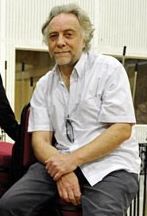 The engineering team of Paul Hicks, Guy Massey and Allan Rouse pulled out the master tape of the rooftop performance of “Dig A Pony” sometime in 2003 to create a new stereo mix for inclusion on the album “Let It Be...Naked.” Because of the engineering team omiting the Beatles chatter before and after the performance, leaving in Billy Preston's excellent electric piano performance, and also following Phil Spector's lead in editing out the awkward “all I want is” segments of the recording, this clear stereo mix is viewed by most as the best available version of the song. The engineering team of Paul Hicks, Guy Massey and Allan Rouse pulled out the master tape of the rooftop performance of “Dig A Pony” sometime in 2003 to create a new stereo mix for inclusion on the album “Let It Be...Naked.” Because of the engineering team omiting the Beatles chatter before and after the performance, leaving in Billy Preston's excellent electric piano performance, and also following Phil Spector's lead in editing out the awkward “all I want is” segments of the recording, this clear stereo mix is viewed by most as the best available version of the song.
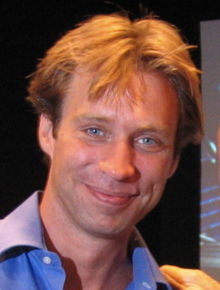 Sometime in 2021, Giles Martin and engineer Sam Okell returned to the master tapes of "Dig A Pony" to create a new mix for inclusion on an Anniversary version of the "Let It Be" album available in various editions. They also created an additional stereo mix of the song, this being "take 14" as recorded on January 28th, 1969 at Apple Studios. Their January 22nd, 1969 recording of "Dig A Pony" as originally included on the proposed Glyn Johns "Get Back" album from 1969 was remastered at this time as well. Sometime in 2021, Giles Martin and engineer Sam Okell returned to the master tapes of "Dig A Pony" to create a new mix for inclusion on an Anniversary version of the "Let It Be" album available in various editions. They also created an additional stereo mix of the song, this being "take 14" as recorded on January 28th, 1969 at Apple Studios. Their January 22nd, 1969 recording of "Dig A Pony" as originally included on the proposed Glyn Johns "Get Back" album from 1969 was remastered at this time as well.
Song Structure and Style
“Dig A Pony” follows the structure of 'verse/ verse/ chorus/ verse/ verse/ chorus/ verse (instrumental) / verse/ verse/ chorus' (or aabaabaaab) with an identical intro and conclusion thrown in as well. The song is primarily in 6/8 time but, as is usual for a late Beatles-period Lennon song, has some surprises along the way.
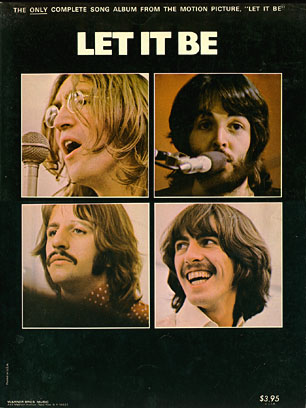 After the commotion and false start on the released recording, the four-measure intro is heard. Both John and George play the identical winding guitar lick on their electric guitars while Paul mimics this on bass. Ringo plays a triplet pattern in measures one through three consisting of a cymbal crash followed by two pounds on his toms, this repeated twice per measure. The fourth measure contains only a cymbal crash on the downbeat while his bandmates continue the guitar lick until the end of the final measure. After the commotion and false start on the released recording, the four-measure intro is heard. Both John and George play the identical winding guitar lick on their electric guitars while Paul mimics this on bass. Ringo plays a triplet pattern in measures one through three consisting of a cymbal crash followed by two pounds on his toms, this repeated twice per measure. The fourth measure contains only a cymbal crash on the downbeat while his bandmates continue the guitar lick until the end of the final measure.
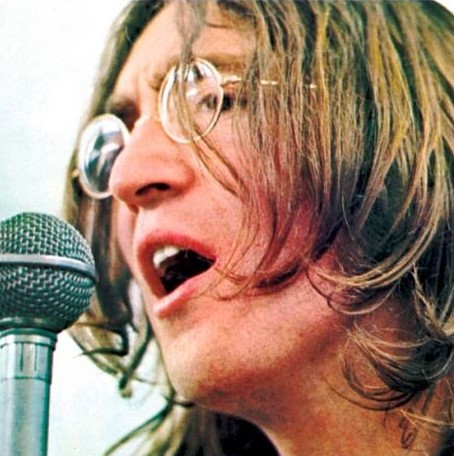 On the actual performance, before the first verse begins, there is a fifth measure of the intro that was edited out by Phil Spector. This measure comprises a drum fill by Ringo, a somewhat awkward ascending guitar / bass figure, and Paul and George singing “all I want is...” as a vocal segway to John's lead vocal, which comes in directly on the downbeat of the first verse that follows. This extra measure, undoubtedly from the mind of Lennon himself, broke up the flow of the song and was understandably omitted. It can, however, be witnessed in the “Let It Be” film as well on as the 1996 “Anthology 3” release. On the actual performance, before the first verse begins, there is a fifth measure of the intro that was edited out by Phil Spector. This measure comprises a drum fill by Ringo, a somewhat awkward ascending guitar / bass figure, and Paul and George singing “all I want is...” as a vocal segway to John's lead vocal, which comes in directly on the downbeat of the first verse that follows. This extra measure, undoubtedly from the mind of Lennon himself, broke up the flow of the song and was understandably omitted. It can, however, be witnessed in the “Let It Be” film as well on as the 1996 “Anthology 3” release.
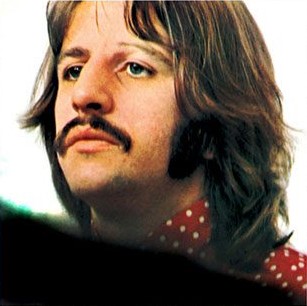 The first verse, like all of them, is seven measures long, all of them being in 6/8 time except for measure four, which is in 3/4 time. John's rhythm guitar acts as time-keeper in this verse, Ringo only accenting the one- and four-beats of each measure with cymbal hits and snare beats, alternatively. Interestingly, Ringo does not account for the 3/4 measure and continues to alternate his cymbal and snare beats as if all measures were of the same time signature. The drummer does, however, add a subdued drum fill in the final measure to usher in the second verse that follows. Also in the first verse are John's lead vocal, Paul's plodding bass lines, and George's lead guitar fills whenever there is a gap in John's singing and then as a lead-in for the second verse in measure seven. Paul's higher harmony backing vocals are also first heard in measure seven above John's “ooohhh” vocal line. The first verse, like all of them, is seven measures long, all of them being in 6/8 time except for measure four, which is in 3/4 time. John's rhythm guitar acts as time-keeper in this verse, Ringo only accenting the one- and four-beats of each measure with cymbal hits and snare beats, alternatively. Interestingly, Ringo does not account for the 3/4 measure and continues to alternate his cymbal and snare beats as if all measures were of the same time signature. The drummer does, however, add a subdued drum fill in the final measure to usher in the second verse that follows. Also in the first verse are John's lead vocal, Paul's plodding bass lines, and George's lead guitar fills whenever there is a gap in John's singing and then as a lead-in for the second verse in measure seven. Paul's higher harmony backing vocals are also first heard in measure seven above John's “ooohhh” vocal line.
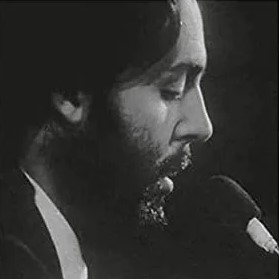 The second verse is identical instrumentally, the only additions being Paul's higher harmony in the first two measures on top of John's “I, ha-hi-hi, ha-hi-hi” vocal and Ringo's drum fills in measures three, five and seven. John's final vocal line this time is “I told you so!” which he belts out in a higher register to create anticipation for the first chorus that follows. The second verse is identical instrumentally, the only additions being Paul's higher harmony in the first two measures on top of John's “I, ha-hi-hi, ha-hi-hi” vocal and Ringo's drum fills in measures three, five and seven. John's final vocal line this time is “I told you so!” which he belts out in a higher register to create anticipation for the first chorus that follows.
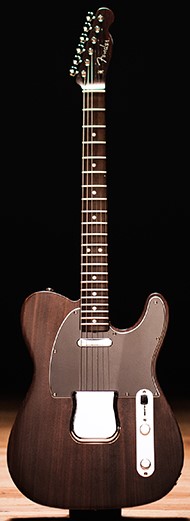 The chorus is four measures long, the first three being in 6/8 while the fourth measure is without a defined time signature. This measure comprises a 'Beatles break' and a purposely labored vocal harmony from John and Paul on the words “dooooooo / be – cause,” which provides a satisfying decrease in tension that the chorus otherwise builds to. Structurally, the chorus is practically a repeat of the intro, the winding guitar riff being heard played by George and Paul in measures two and three and by John in measure two. The chorus is four measures long, the first three being in 6/8 while the fourth measure is without a defined time signature. This measure comprises a 'Beatles break' and a purposely labored vocal harmony from John and Paul on the words “dooooooo / be – cause,” which provides a satisfying decrease in tension that the chorus otherwise builds to. Structurally, the chorus is practically a repeat of the intro, the winding guitar riff being heard played by George and Paul in measures two and three and by John in measure two.
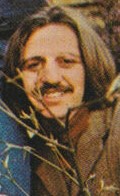 Ringo allows for a 'Beatles break' in both measures two and four, the first break allowing for the guitar riff to be the focal point as we witnessed in the fourth measure of the intro, the second break displaying the above mentioned vocal harmonies from John and Paul. Otherwise, Ringo thrashes away on his drums in measures one and three, his performance played in an especially heavy-handed way in the third measure. John and Paul's harmonies throughout the chorus are both sung with great enthusiasm, popping in and out of falsetto to great effect when necessary, although not usually at the same time. With the tempo lost during the acapella harmonies in the fourth measure, Ringo brings the band back in with an appropriate drum fill. Ringo allows for a 'Beatles break' in both measures two and four, the first break allowing for the guitar riff to be the focal point as we witnessed in the fourth measure of the intro, the second break displaying the above mentioned vocal harmonies from John and Paul. Otherwise, Ringo thrashes away on his drums in measures one and three, his performance played in an especially heavy-handed way in the third measure. John and Paul's harmonies throughout the chorus are both sung with great enthusiasm, popping in and out of falsetto to great effect when necessary, although not usually at the same time. With the tempo lost during the acapella harmonies in the fourth measure, Ringo brings the band back in with an appropriate drum fill.
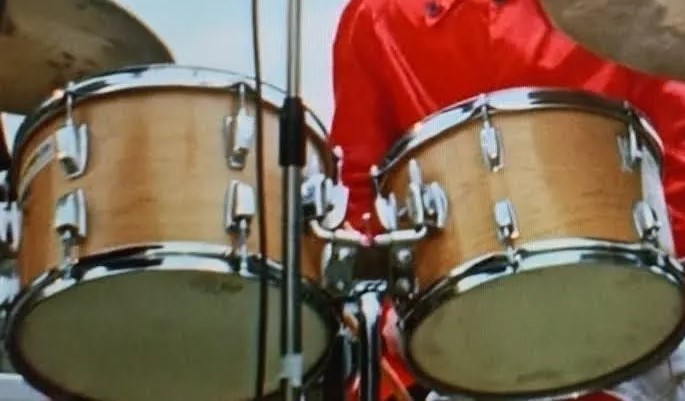 Next we hear a near identical repeat of the 'verse/ verse/ chorus' pattern, all instrumentation and vocalization being the same except for one notable exception. Ringo continues his cymbal / snare accents on the one- and four-beats of the measures in the third verse but then progresses to a standard 6/8 drum beat in the fourth verse, riding on his hi-hat throughout and adding additional drum breaks when the mood strikes him. Interestingly, in the first measure of the third verse, he begins riding on his hi-hat but then apparently realizes that he was doing this too soon and goes back to just accenting the one- and four-beats for the remaining measures of this verse. This seems to reveal that he was instructed by someone, probably John, to wait until the fourth measure to play the straight beat and he momentarily forgot. Next we hear a near identical repeat of the 'verse/ verse/ chorus' pattern, all instrumentation and vocalization being the same except for one notable exception. Ringo continues his cymbal / snare accents on the one- and four-beats of the measures in the third verse but then progresses to a standard 6/8 drum beat in the fourth verse, riding on his hi-hat throughout and adding additional drum breaks when the mood strikes him. Interestingly, in the first measure of the third verse, he begins riding on his hi-hat but then apparently realizes that he was doing this too soon and goes back to just accenting the one- and four-beats for the remaining measures of this verse. This seems to reveal that he was instructed by someone, probably John, to wait until the fourth measure to play the straight beat and he momentarily forgot.
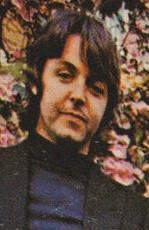 The second chorus concludes somewhat differently this time. Paul appears to have run out of breath on the word “because,” resulting in him taking a quick breath and delivering an “oooh” during Ringo's drum fill, John answering him with an improvised “aaah!” The second chorus concludes somewhat differently this time. Paul appears to have run out of breath on the word “because,” resulting in him taking a quick breath and delivering an “oooh” during Ringo's drum fill, John answering him with an improvised “aaah!”
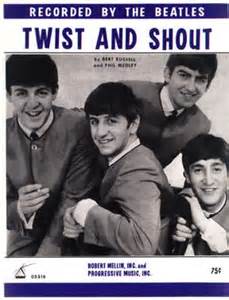 Three verses follow immediately afterwards, the first featuring an impressive and well-rehearsed guitar solo from George, who delivers it masterfully. Ringo plays his straight 6/8 drum pattern while riding on his hi-hat throughout all three verses, adding appropriate drum fills in each verse. John begins singing at the end of the fifth verse with Paul adding harmony vocals on “ooooh, now” which they continue into the sixth verse. The seventh verse is noteworthy for John's improvised “boat you row-ooh-ow!” and “Yeah!” in the fifth measure, which seem to indicate that he's enjoying the performance. His voice does crack slightly on the line “I told you so” in the seventh measure, this adding to the flavor of the performance not unlike his vocal delivery on “Twist And Shout” six years prior. Three verses follow immediately afterwards, the first featuring an impressive and well-rehearsed guitar solo from George, who delivers it masterfully. Ringo plays his straight 6/8 drum pattern while riding on his hi-hat throughout all three verses, adding appropriate drum fills in each verse. John begins singing at the end of the fifth verse with Paul adding harmony vocals on “ooooh, now” which they continue into the sixth verse. The seventh verse is noteworthy for John's improvised “boat you row-ooh-ow!” and “Yeah!” in the fifth measure, which seem to indicate that he's enjoying the performance. His voice does crack slightly on the line “I told you so” in the seventh measure, this adding to the flavor of the performance not unlike his vocal delivery on “Twist And Shout” six years prior.
 This is followed by a third chorus, which is identical to the others. The intro is then repeated as the song's conclusion, the extra “all I want is...” measure also being edited out with the word “...you” being heard on the released version as sung in falsetto by Paul. As the final chord and cymbal crash rings out, John flicks a fret on his guitar repeatedly to offer up the final word. This is followed by a third chorus, which is identical to the others. The intro is then repeated as the song's conclusion, the extra “all I want is...” measure also being edited out with the word “...you” being heard on the released version as sung in falsetto by Paul. As the final chord and cymbal crash rings out, John flicks a fret on his guitar repeatedly to offer up the final word.
American Releases
The first and primary release of “Dig A Pony” was on the “Let It Be” soundtrack album, which came out in the US on May 18th, 1970. It was distributed in a gate-fold jacket in America, as opposed to the box set with photo book that was released in the UK. It spent four weeks in the top spot of the Billboard album chart and has sold well over four million copies in America alone.
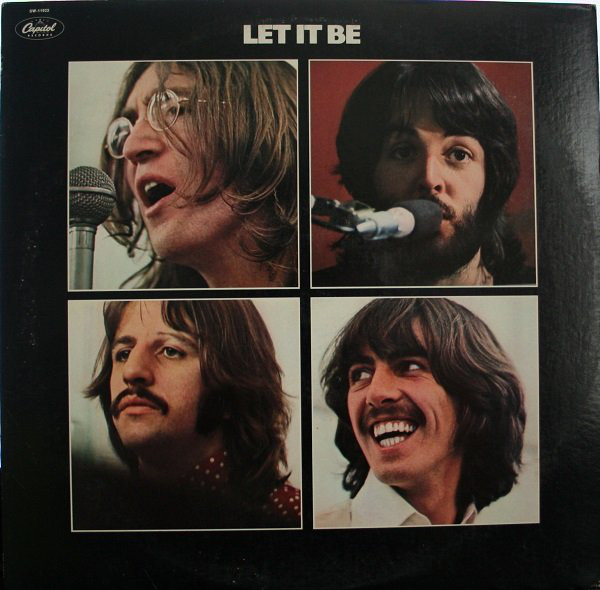 Despite having a red Apple Records label, "Let It Be" was distributed by United Artists Records upon initial release, although it eventually was dropped by the label's roster a few years later. While Capitol kept all other US Beatles albums in print throughout the '70s, “Let It Be” was the only LP from the group that wasn't legitimately available for a number of years. This was rectified in 1978, however, when Capitol purchased the UA catalog and rereleased the “Let It Be” album once again, this time in a standard single sleeve cover. The album first appeared on compact disc on October 10th, 1987, and then as a remastered CD on September 9th, 2009. A newly mixed vinyl and CD edition of the album was then released on October 15th, 2021, as well as a special edition picture disc. Despite having a red Apple Records label, "Let It Be" was distributed by United Artists Records upon initial release, although it eventually was dropped by the label's roster a few years later. While Capitol kept all other US Beatles albums in print throughout the '70s, “Let It Be” was the only LP from the group that wasn't legitimately available for a number of years. This was rectified in 1978, however, when Capitol purchased the UA catalog and rereleased the “Let It Be” album once again, this time in a standard single sleeve cover. The album first appeared on compact disc on October 10th, 1987, and then as a remastered CD on September 9th, 2009. A newly mixed vinyl and CD edition of the album was then released on October 15th, 2021, as well as a special edition picture disc.
 Interestingly, the title of this song on American releases, as printed on the back of the album cover as well as on the actual record label, was “I Dig A Pony.” In the UK, as well as in most other countries, the song was titled correctly as, simply, “Dig A Pony,” American Beatles fans not being aware of the song's actual title for decades. This was finally rectified in 1987 when the “Let It Be” album was first released on compact disc. Interestingly, the title of this song on American releases, as printed on the back of the album cover as well as on the actual record label, was “I Dig A Pony.” In the UK, as well as in most other countries, the song was titled correctly as, simply, “Dig A Pony,” American Beatles fans not being aware of the song's actual title for decades. This was finally rectified in 1987 when the “Let It Be” album was first released on compact disc.
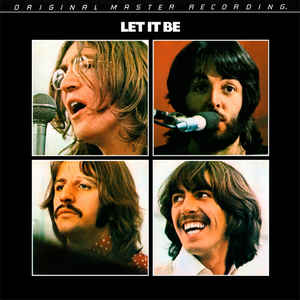 In November of 1986, the “Let It Be” soundtrack album was also made available as an “Original Master Recording” release by Mobile Fidelity Sound Lab. Their practice was to prepare a new master utilizing half-speed mastering technology from the original master tapes, in this case using what was referred to therein as a “corrected copy tape.” The album was issued in both a single sleeve and gatefold cover, the single sleeve cover being the rarest. In November of 1986, the “Let It Be” soundtrack album was also made available as an “Original Master Recording” release by Mobile Fidelity Sound Lab. Their practice was to prepare a new master utilizing half-speed mastering technology from the original master tapes, in this case using what was referred to therein as a “corrected copy tape.” The album was issued in both a single sleeve and gatefold cover, the single sleeve cover being the rarest.
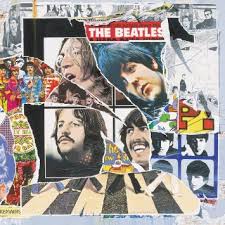 A version of “Dig A Pony” as recorded at Apple Studios on January 22nd, 1969, was released on the compilation album “Anthology 3” on October 28th, 1996. This version, as described above, concludes with interesting dialog between John and Paul that shows the comaraderie within the band, this flying in the face of those who insist they were at each other's throats throughout this time period. A version of “Dig A Pony” as recorded at Apple Studios on January 22nd, 1969, was released on the compilation album “Anthology 3” on October 28th, 1996. This version, as described above, concludes with interesting dialog between John and Paul that shows the comaraderie within the band, this flying in the face of those who insist they were at each other's throats throughout this time period.
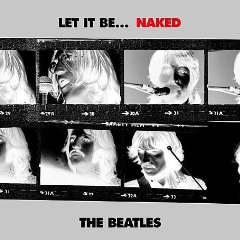 November 17th, 2003, was the release date for “Let It Be...Naked,” a project that was propsed by Paul McCartney to present the material as they originally intended. As described above, the same rooftop performance of the song from January 31st, 1969 was chosen for this album as was included on the original “Let It Be” album, minus the sounds and dialog heard before and after on the original release. November 17th, 2003, was the release date for “Let It Be...Naked,” a project that was propsed by Paul McCartney to present the material as they originally intended. As described above, the same rooftop performance of the song from January 31st, 1969 was chosen for this album as was included on the original “Let It Be” album, minus the sounds and dialog heard before and after on the original release.
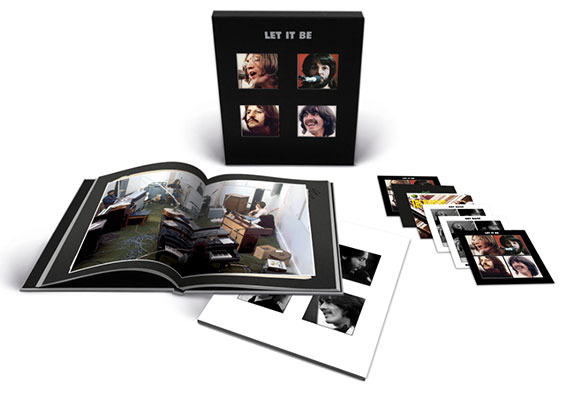 On October 15th, 2021, various editions of the "Let It Be" album were released that feature interesting versions of "Dig A Pony." The "Deluxe" 2CD set features the newly remixed Giles Martin version of the song as well as "take 14" as recorded on January 28th, 1969, while both the "Super Deluxe" 5CD + Blu-ray edition and the "Super Deluxe" 4LP + 1 12" EP edition also contain the final take of "Dig A Pony" recorded on January 22nd, 1969, which was originally included on Glyn John's aborted 1969 "Get Back" album. On October 15th, 2021, various editions of the "Let It Be" album were released that feature interesting versions of "Dig A Pony." The "Deluxe" 2CD set features the newly remixed Giles Martin version of the song as well as "take 14" as recorded on January 28th, 1969, while both the "Super Deluxe" 5CD + Blu-ray edition and the "Super Deluxe" 4LP + 1 12" EP edition also contain the final take of "Dig A Pony" recorded on January 22nd, 1969, which was originally included on Glyn John's aborted 1969 "Get Back" album.
Live Performances
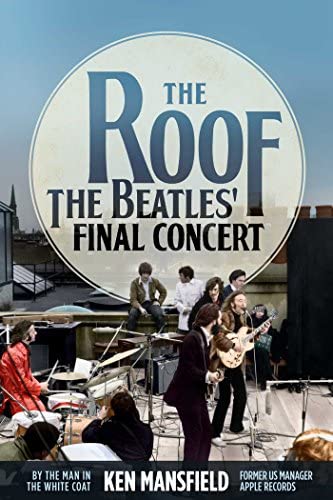 “Dig A Pony” earned itself the privilege of being among the five songs The Beatles performed at their final live performance on January 30th, 1969, on the rooftop of their Apple headquarters on Savile Row in London. Getting all of The Beatles' instruments on the roof was a major ordeal, Billy Preston's keyborads needing to be hoisted through a disassembled skylight, according to Ken Mansfield's book "The Roof: The Beatles' Final Concert." Although this performance was witnessed only by an undisclosed number of unsuspecting Londoners who happened to be on their lunch break on that day, the event was recorded and filmed for Beatles' fans across the world to enjoy, the footage of this performance being included on the “Let It Be” film, which was released on May 13th, 1970. “Dig A Pony” earned itself the privilege of being among the five songs The Beatles performed at their final live performance on January 30th, 1969, on the rooftop of their Apple headquarters on Savile Row in London. Getting all of The Beatles' instruments on the roof was a major ordeal, Billy Preston's keyborads needing to be hoisted through a disassembled skylight, according to Ken Mansfield's book "The Roof: The Beatles' Final Concert." Although this performance was witnessed only by an undisclosed number of unsuspecting Londoners who happened to be on their lunch break on that day, the event was recorded and filmed for Beatles' fans across the world to enjoy, the footage of this performance being included on the “Let It Be” film, which was released on May 13th, 1970.
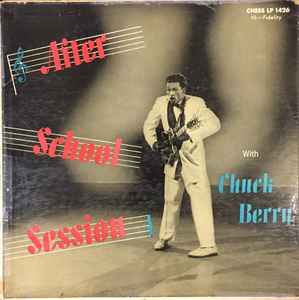 This footage, captured from multiple camera angles, shows The Beatles in top form and clearly enjoying themselves. George kneels down in front of John during the second verse, which prompts John to hold up his guitar in a Chuck Berry-like fashion in response. Clips of two policeman entering the Apple building were interspersed with the footage of “Dig A Pony” in the movie, the intention of these "bobbies" being to shut down the performance because of noise ordinance complaints. All in all, this entertaining footage is groundbreaking due to it documenting the actual released take of a Beatles song being recorded. This footage, captured from multiple camera angles, shows The Beatles in top form and clearly enjoying themselves. George kneels down in front of John during the second verse, which prompts John to hold up his guitar in a Chuck Berry-like fashion in response. Clips of two policeman entering the Apple building were interspersed with the footage of “Dig A Pony” in the movie, the intention of these "bobbies" being to shut down the performance because of noise ordinance complaints. All in all, this entertaining footage is groundbreaking due to it documenting the actual released take of a Beatles song being recorded.
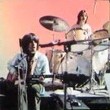 Also included in the film, at around the 18-minute mark, is actual footage of John introducing “Dig A Pony” to Paul for the first time on January 7th, 1969. George and Ringo timidly played along with John since they had become somewhat acquainted with the song five days before in Paul's absence. With Yoko by his side, John sings and plays his Epiphone Casino electric guitar and sings the lyrics he had in place at the time while Paul watches on, yawns, and quietly fiddles with his bass to find the correct notes while experimenting with harmony vocals. As described above, John decides he doesn't want to be bothered with hashing out an arrangement for the song at that time, instead asking, “Has anybody got a fast one?” Also included in the film, at around the 18-minute mark, is actual footage of John introducing “Dig A Pony” to Paul for the first time on January 7th, 1969. George and Ringo timidly played along with John since they had become somewhat acquainted with the song five days before in Paul's absence. With Yoko by his side, John sings and plays his Epiphone Casino electric guitar and sings the lyrics he had in place at the time while Paul watches on, yawns, and quietly fiddles with his bass to find the correct notes while experimenting with harmony vocals. As described above, John decides he doesn't want to be bothered with hashing out an arrangement for the song at that time, instead asking, “Has anybody got a fast one?”
Conclusion
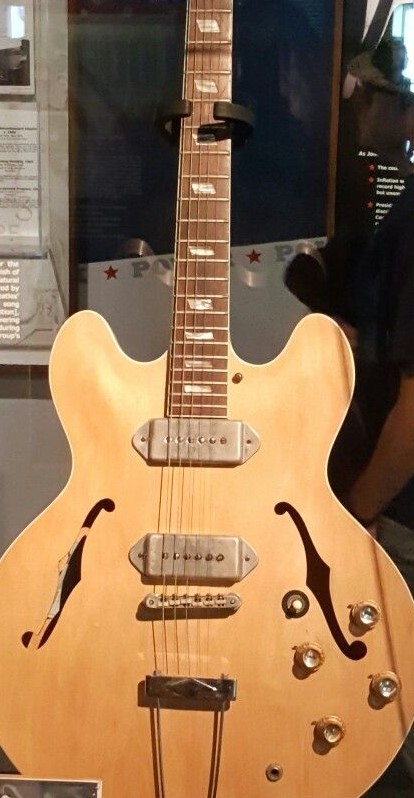 For a song that its composer later referred to as “another piece of garbage,” “Dig A Pony” sure has a lot to offer. Despite the strange title and lyrics, the song is instantly hummable after a listen or two (as witnessed by me from my ex-wife), which is a mark of a well-written pop song. Its catchy chorus with the “all I want is you” hookline, along with the infectious repeating guitar riff (played by all three guitarists simultaneously live, no less), makes this often overlooked gem in the Beatles' catalog shine brightly. For a song that its composer later referred to as “another piece of garbage,” “Dig A Pony” sure has a lot to offer. Despite the strange title and lyrics, the song is instantly hummable after a listen or two (as witnessed by me from my ex-wife), which is a mark of a well-written pop song. Its catchy chorus with the “all I want is you” hookline, along with the infectious repeating guitar riff (played by all three guitarists simultaneously live, no less), makes this often overlooked gem in the Beatles' catalog shine brightly.
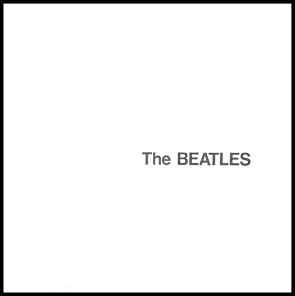 Naysayers who insist that the “Let It Be” album is a black eye for The Beatles, “a cardboard tombstone” as New Musical Express critic Alan Smith famously described it, do well to take a much deeper look. Coming off of a very prolific period for John Lennon's songwriting on the “White Album,” he was still cranking out imaginative, well-crafted compositions for his group. And as can be witnessed in the “Let It Be” film, his fellow band members fully enjoyed performing it. “Dig A Pony” shows The Beatles in top form, even toward the conclusion of their career together. Naysayers who insist that the “Let It Be” album is a black eye for The Beatles, “a cardboard tombstone” as New Musical Express critic Alan Smith famously described it, do well to take a much deeper look. Coming off of a very prolific period for John Lennon's songwriting on the “White Album,” he was still cranking out imaginative, well-crafted compositions for his group. And as can be witnessed in the “Let It Be” film, his fellow band members fully enjoyed performing it. “Dig A Pony” shows The Beatles in top form, even toward the conclusion of their career together.
Song Summary
“Dig A Pony”
Written by: John Lennon / Paul McCartney
- Song Written: December, 1968 to January, 1969
- Song Recorded: January 30, 1969
- First US Release Date: May 18, 1970
- First US Album Release: Apple #AR-34001 “Let It Be”
- British Album Release: Apple #PCS 7096 “Let It Be”
- US Single Release: n/a
- Highest Chart Position: n/a
- Length: 3:55
- Key: A major
- Producer: George Martin, Phil Spector
- Engineers: Glyn Johns, Alan Parsons
Instrumentation (most likely):
- John Lennon - Lead Vocals, Rhythm Guitar (1965 Epiphone ES-230TD Casino)
- Paul McCartney - Bass (1963 Hofner 500/1), backing vocals
- George Harrison - Lead Guitar (1968 Fender Rosewood Telecaster), backing vocals
- Ringo Starr - Drums (1968 Ludwig Hollywood Maple)
- Billy Preston - Electric Piano (1968 Fender Rhodes Seventy-Three Sparkle Top)
Written and compiled by Dave Rybaczewski
|
IF YOU WOULD LIKE TO MAKE A DONATION TO KEEP THIS WEBSITE UP AND RUNNING, PLEASE CLICK BELOW!
Sign Up Below for our MONTHLY BEATLES TRIVIA QUIZ!
|